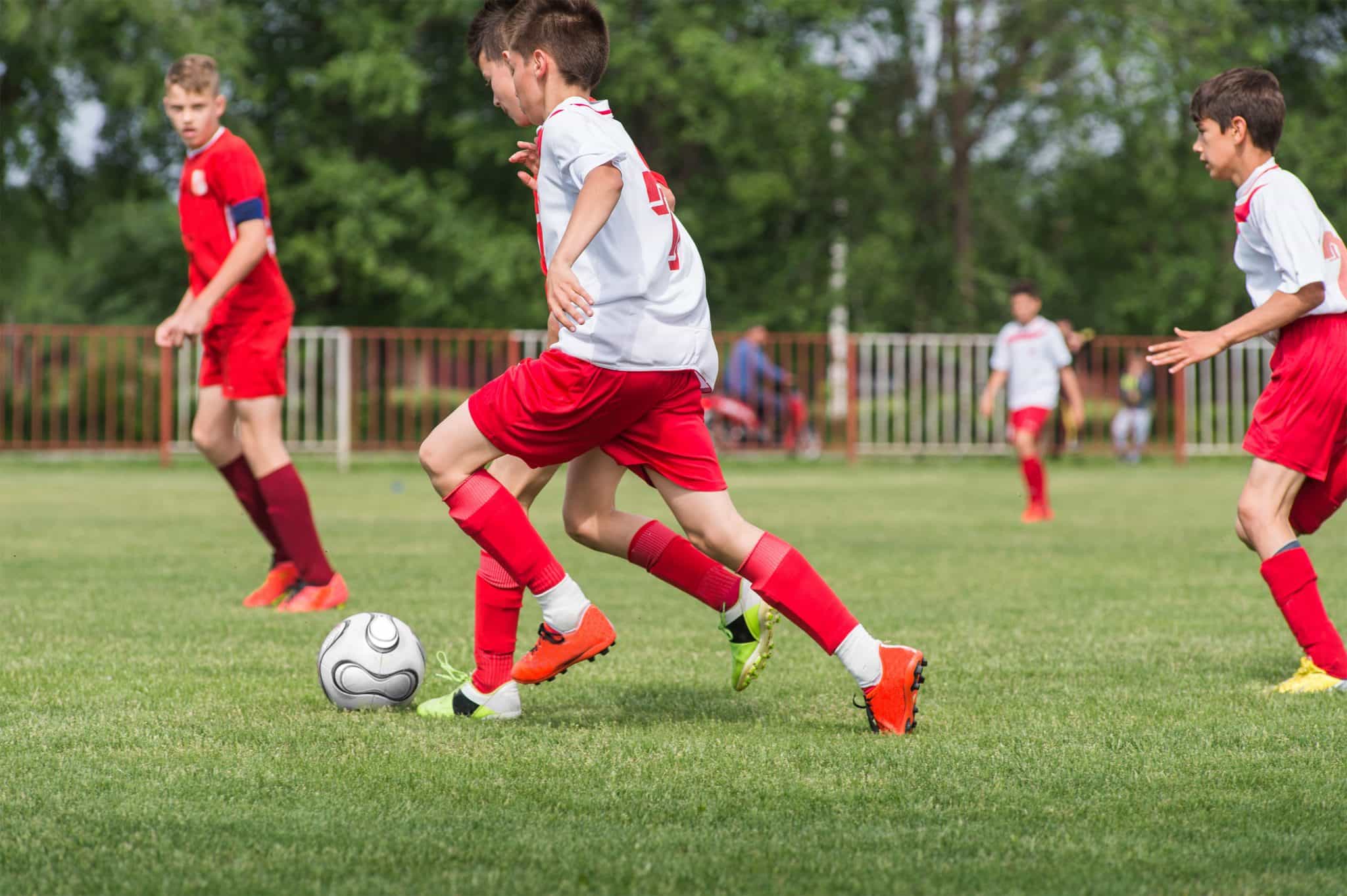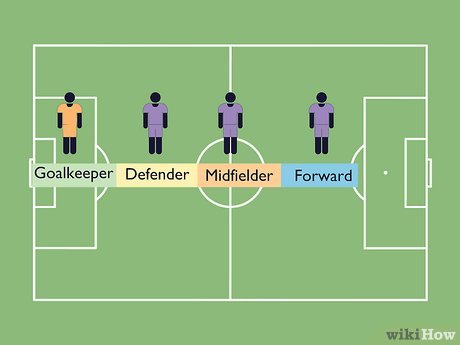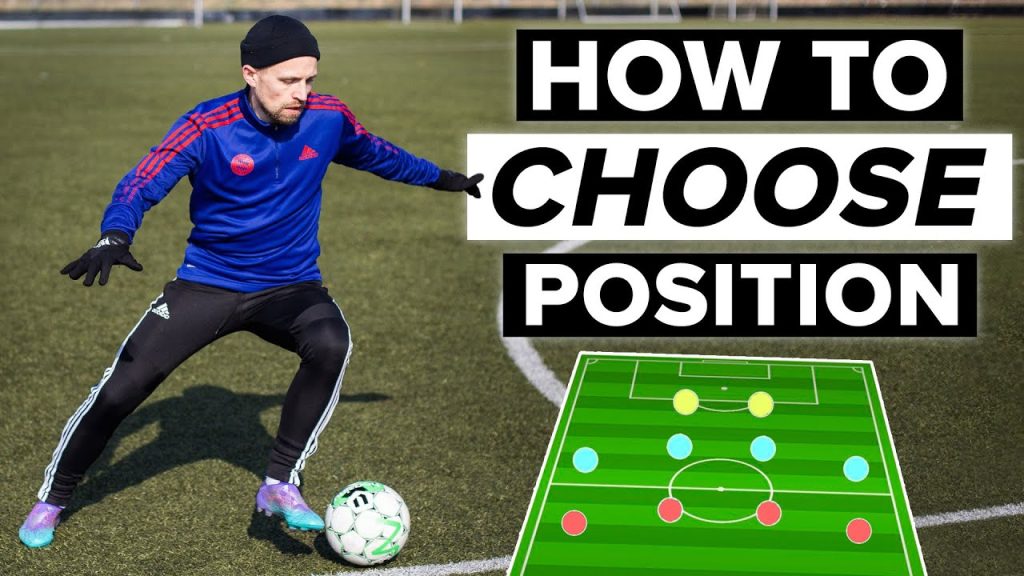Soccer is the world’s most popular sport. Millions play and watch it.
Want to learn how to play soccer? You’ve come to the right place. Soccer is simple but requires practice and skill. Soccer, known as football outside the U. S. , is played with 11 players on each team. The goal is to score by getting the ball into the opposing team’s net.
All you need is a ball and some space. Learning soccer involves understanding basic rules, techniques, and teamwork. From dribbling to passing, every skill has its importance. This guide will provide you with the essentials to get started. You’ll discover what makes soccer a beloved sport worldwide. Ready to kick off your soccer journey? Let’s dive in and explore the basics of playing soccer.
Introduction To Soccer
Soccer, known as football in most parts of the world, is a dynamic and exciting sport. It brings together players and fans from all corners of the globe. With simple rules and minimal equipment, it is accessible to everyone. Let’s delve into the fascinating world of soccer.
Brief History
Soccer has ancient roots. It dates back over 2,000 years. Ancient civilizations in China, Greece, and Rome played games involving kicking a ball. Modern soccer started in England in the 19th century. In 1863, the Football Association was formed. This created standardized rules for the game. The sport quickly spread to other countries.
Popularity Worldwide
Soccer is the most popular sport globally. Over 250 million players participate in the game. The FIFA World Cup is the most-watched sporting event. Billions of fans tune in to watch it. Europe, South America, and Africa are passionate about soccer. The game also grows rapidly in Asia and North America. Soccer’s universal appeal lies in its simplicity and excitement.
Basic Rules Of Soccer
Understanding the basic rules of soccer is crucial for anyone new to the game. Whether you’re a player or a fan, these rules help you appreciate and enjoy soccer more. Let’s dive into the fundamental aspects of the game.
Objective Of The Game
The main goal in soccer is to score more goals than the opponent. Each team tries to get the ball into the other team’s net. The team with the most goals at the end of the match wins.
Duration And Scoring
A standard soccer match lasts 90 minutes. It is divided into two 45-minute halves. There is a 15-minute break at halftime. If the score is tied, the match may go into extra time or a penalty shootout. Each goal counts as one point.
Player Positions
Each team has 11 players on the field. These include one goalkeeper and ten outfield players. Outfield players have different roles such as defenders, midfielders, and forwards. Defenders protect their goal. Midfielders link defense and attack. Forwards focus on scoring goals.
Essential Equipment
Playing soccer requires specific equipment to ensure safety and performance on the field. Having the right gear can make a big difference in how you play. Below are the essential items you need to get started with soccer.
Soccer Ball
The soccer ball is the most important piece of equipment. Balls come in different sizes, with size 5 being the standard for adults. Younger players often use sizes 3 or 4. Choose a ball that suits your age and skill level. Ensure it is properly inflated before each game.
Footwear
Proper footwear is crucial for soccer. Soccer cleats are designed to provide traction on grass and turf. They help prevent slipping and improve your performance. Look for cleats with good support and a comfortable fit. Indoor soccer shoes are an alternative for playing on hard surfaces.
Protective Gear
Wearing protective gear can prevent injuries. The most common items include:
- Shin guards: Protect your shins from kicks and collisions.
- Goalkeeper gloves: Essential for goalkeepers to protect their hands.
Always ensure your protective gear fits well and is in good condition.
Fundamental Skills
Playing soccer requires mastering several fundamental skills. These skills are essential for any player, whether you are a beginner or advanced. Understanding and practicing these basics will help you improve your game and enjoy the sport more.
Dribbling Techniques
Dribbling is the ability to move the ball past defenders with control. Key techniques to practice include:
- Inside Cut: Use the inside of your foot to push the ball.
- Outside Cut: Use the outside of your foot to change direction.
- Sole Roll: Roll the ball with the sole of your foot.
Practice these techniques regularly to improve your dribbling skills. Try to keep the ball close to your feet for better control.
Passing And Receiving
Good passing and receiving are crucial in soccer. They allow you to keep possession and create scoring opportunities. Here are some basic tips:
- Passing: Use the inside of your foot for short passes. Use the instep for long passes.
- Receiving: Cushion the ball with the inside of your foot. Control the ball quickly and look for your next move.
Practice passing and receiving with a partner. Focus on accuracy and control.
Shooting Basics
Shooting is the skill of striking the ball towards the goal. The basic techniques include:
- Instep Drive: Use the laces of your shoe for power.
- Side-Foot Shot: Use the inside of your foot for accuracy.
- Volley: Strike the ball before it touches the ground.
Always keep your eyes on the ball. Aim for the corners of the goal. Practice these techniques to become a better shooter.
Physical Fitness
Physical fitness is crucial for anyone aiming to play soccer effectively. Soccer requires a blend of endurance, strength, and flexibility. Each of these components enhances your ability to perform on the field.
Endurance Training
Endurance training helps you maintain energy levels throughout the game. Soccer matches last 90 minutes, demanding continuous physical effort.
Consider these activities for endurance:
- Running: Go for long-distance runs to build stamina.
- Interval Training: Alternate between sprinting and jogging.
- Cycling: Incorporate cycling into your routine for low-impact endurance.
These exercises help in managing fatigue and keeping up with the fast pace of the game.
Strength And Conditioning
Strength and conditioning are vital for soccer players. Strong muscles help in tackling, shooting, and overall performance.
Here are some key exercises:
| Exercise | Target Area |
|---|---|
| Squats | Legs and core |
| Lunges | Legs and glutes |
| Push-ups | Upper body |
| Planks | Core stability |
Incorporate these exercises into your training routine to improve overall strength and power.
Flexibility Exercises
Flexibility improves your range of motion and prevents injuries. Stretching should be a key part of your training.
Effective flexibility exercises include:
- Dynamic Stretching: Perform leg swings and arm circles before the game.
- Static Stretching: Hold stretches like hamstring stretches and calf stretches for 20-30 seconds post-game.
- Yoga: Practice yoga regularly to enhance flexibility and balance.
Regular flexibility exercises keep your muscles limber and reduce the risk of strains.

Credit: www.youtube.com
Teamwork And Strategy
Understanding teamwork and strategy is crucial in soccer. Each player must work together to achieve common goals. Effective teamwork and strategy can lead to a successful game.
Communication On The Field
Communication is vital in soccer. Players must talk to each other during the game. This helps in sharing information quickly. Use short, clear phrases to convey messages. For example, “Pass left,” “Man on,” or “Switch.” Non-verbal communication is also important. Hand signals or eye contact can help too. The key is to stay aware and connected.
Basic Formations
Formations are the backbone of a team’s strategy. They define the position of each player on the field. Here are some common formations:
| Formation | Description |
|---|---|
| 4-4-2 | Four defenders, four midfielders, and two forwards. Balanced and versatile. |
| 4-3-3 | Four defenders, three midfielders, and three forwards. Focuses on attack. |
| 3-5-2 | Three defenders, five midfielders, and two forwards. Strong midfield presence. |
Choose the formation that best suits your team’s strengths. Adapt as needed during the game.
Understanding Roles
Each player has a specific role on the field. Understanding these roles is essential. Here is a quick overview:
- Goalkeeper: The last line of defense. Protects the goal.
- Defenders: Prevent the opposing team from scoring. Includes center backs and full backs.
- Midfielders: Link between defense and attack. Often control the pace of the game.
- Forwards: Main goal scorers. Includes strikers and wingers.
Each role has specific tasks. For example, defenders must clear the ball from danger zones. Midfielders should create scoring opportunities. Forwards need to finish these chances. Knowing and executing your role well can lead to team success.
Practice Drills
Playing soccer well requires more than just natural talent. It demands dedication and regular practice. Practice drills are essential to improve skills, teamwork, and game understanding. They help players enhance their techniques and boost their confidence on the field. Here, we will explore different types of practice drills that can help players at any level.
Individual Drills
Individual drills focus on personal skill development. These exercises help players refine their ball control, dribbling, and shooting. Here are some effective individual drills:
- Dribbling through Cones: Set up a series of cones in a straight line. Dribble the ball through the cones using both feet.
- Juggling: Keep the ball in the air using your feet, thighs, and head. This improves balance and ball control.
- Wall Passes: Use a wall to practice passing and receiving. Pass the ball against the wall and control the rebound.
- Shooting Practice: Aim at different targets in the goal. Practice shooting with both feet.
Group Drills
Group drills enhance teamwork and communication. These drills involve multiple players and focus on passing, defending, and attacking. Some useful group drills include:
- Passing Circles: Form a circle with players. Pass the ball quickly around the circle. Focus on accuracy and speed.
- 2v2 or 3v3 Games: Small-sided games improve decision-making and teamwork. They replicate game situations in a controlled environment.
- Rondo: A group of players forms a circle with one or two players in the middle. The outer players pass the ball while the middle players try to intercept.
- Defensive Drills: Practice defending in pairs. One player attacks while the other defends, focusing on positioning and tackling.
Game Simulations
Game simulations mimic real match conditions. They help players apply their skills in a competitive setting. Here are some effective game simulation drills:
- Full-Field Scrimmages: Play a full game with two teams. This helps players understand positioning and strategies.
- Half-Field Games: Use half the field to focus on specific areas like attacking or defending. It enhances tactical awareness.
- Set Piece Practice: Practice corners, free-kicks, and throw-ins. This improves scoring opportunities and defensive organization during set pieces.
- Conditioned Games: Apply specific rules, like limited touches or zones. It focuses on developing certain skills or tactics.
Consistent practice with these drills will improve soccer skills significantly. Dedicate time to both individual and group drills. It will ensure well-rounded development and prepare players for real match situations.

Credit: www.wikihow.com
Game Day Preparation
Preparing for game day is crucial for any soccer player. Proper preparation ensures peak performance and reduces injury risk. This section focuses on key aspects of game day preparation.
Mental Preparation
Mental preparation is just as important as physical readiness. Visualize your performance and focus on your role. Positive thinking can boost your confidence. Stay calm and composed. Avoid distractions and stay focused on the game.
Pre-game Nutrition
Proper nutrition fuels your body for the game. Eat a balanced meal 2-3 hours before the match. Include carbohydrates, proteins, and healthy fats. Avoid heavy and greasy foods. Stay hydrated by drinking water throughout the day. A small snack like a banana can be helpful 30 minutes before the game.
Warm-up Routines
A good warm-up reduces injury risk and prepares your body. Start with light jogging to increase your heart rate. Follow with dynamic stretches to loosen your muscles. Include exercises like high knees, butt kicks, and leg swings. Practice some ball drills to get your touch right. Finish with short sprints to get your body ready for game intensity.
Common Mistakes To Avoid
Soccer is a beautiful game, but even the best players make mistakes. Knowing what to avoid can make all the difference in your performance. Here are some common mistakes that players often make:
Overdribbling
Overdribbling is a frequent mistake in soccer. It occurs when a player tries to keep the ball too long. This can lead to turnovers and missed opportunities.
Players often feel they need to showcase their skills. But soccer is a team sport. Passing the ball to teammates can open up better chances to score.
Tips to Avoid Overdribbling:
- Keep your head up to see the field.
- Look for open teammates.
- Limit dribbling to create space and make quick passes.
Poor Positioning
Poor positioning can break your team’s defense or attack. Players must understand their role on the field. Being in the wrong place can leave gaps for the opponent to exploit.
Good positioning involves knowing where to be at any moment. It requires awareness and anticipation.
Tips to Improve Positioning:
- Stay aware of your surroundings.
- Communicate with teammates.
- Move into open spaces to receive the ball.
Lack Of Communication
Lack of communication is a common issue in soccer. Players must talk to each other. Communication helps in making quick decisions and organizing the team.
Silent teams often fail to defend or attack effectively. Simple phrases like “I got it” or “Man on” can make a big difference.
Ways to Improve Communication:
- Use short, clear phrases.
- Call out for the ball.
- Alert teammates of opponents’ positions.
By focusing on these common mistakes, you can improve your soccer skills and help your team perform better on the field.

Credit: completesoccerguide.com
Resources For Learning
Learning to play soccer can be both fun and challenging. Many resources can help you improve your skills. You can find books, online tutorials, and local clubs. Each resource offers unique advantages. Here are some options for you to consider.
Books And Guides
Books and guides provide in-depth knowledge about soccer. They cover rules, strategies, and techniques. Many books include illustrations and step-by-step instructions. Some popular titles are “Soccer for Dummies” and “The Complete Soccer Goalkeeper”. These resources are great for beginners and advanced players alike.
Online Tutorials
Online tutorials are convenient and accessible. You can find videos on YouTube or soccer training websites. Some websites offer free tutorials, while others require a subscription. Look for channels with experienced coaches. They often share tips and drills to improve your game.
Platforms like Skillshare and Udemy also offer soccer courses. These courses can cover specific skills or general gameplay. Online tutorials allow you to learn at your own pace.
Local Clubs And Coaches
Joining a local soccer club is a great way to learn. Clubs often have experienced coaches who can guide you. They offer training sessions and practice matches. Playing with others helps you improve faster. Coaches can provide personalized feedback on your performance.
Local clubs also offer a sense of community. You can make friends and share your passion for soccer. Look for clubs in your area and attend a trial session.
Frequently Asked Questions
What Are The Basic Rules Of Soccer?
The basic rules include 11 players per team, a round ball, and no hands allowed. The game consists of two 45-minute halves.
How Long Is A Soccer Game?
A soccer game lasts for 90 minutes, divided into two 45-minute halves. There may be additional stoppage time.
What Equipment Do You Need For Soccer?
You need a soccer ball, cleats, shin guards, and a uniform. Goalkeepers also need gloves.
How Do You Score In Soccer?
To score, the ball must completely cross the goal line between the goalposts. The team with the most goals wins.
Conclusion
Playing soccer can be fun and rewarding. Follow the basic steps and practice often. Remember, teamwork is key. Enjoy the game and improve your skills. With dedication, you can become a better player. Stay active, have fun, and keep learning.
Soccer is a great way to stay fit and make friends. So, grab a ball, find a field, and start playing today.


